Baby Boomers No Longer The Majority Of U.S. Voters
A new study shows that Baby Boomers no longer account for the largest segment of voters in the United States.
According to a new Pew Research study, Baby Boomers are no longer the biggest voting bloc in the country:
Baby Boomers and other older Americans are no longer the majority of voters in U.S. presidential elections.
Millennials and Generation Xers cast 69.6 million votes in the 2016 general election, a slight majority of the 137.5 million total votes cast, according to a Pew Research Center analysis of Census Bureau data. Meanwhile, Boomers and older voters represented fewer than half of all votes for the first time in decades. The shift has occurred as Millennials accounted for a growing share of the electorate and as those in the Silent and Greatest generations aged and died.
Millennials (those ages 18 to 35 in 2016) reported casting 34 million votes last November, a steep rise from the 18.4 million votes they cast in 2008. But, despite the larger size of the Millennial generation, the Millennial vote has yet to eclipse the Gen X vote, as 35.7 million Gen Xers (ages 36 to 51 in 2016) reported voting last year.
It is likely, though not certain, that the size of the Millennial vote will surpass the Gen X vote in the 2020 presidential election. The Millennial generation as a whole is larger than Gen X (both in absolute size and in the number of birth years it spans). In addition, the ranks of the nation’s Millennials are growing faster than older generations due to immigration, which is likely to be accompanied by increased naturalizations. As a result, Millennials are likely to be the only adult generation whose number of eligible voters will appreciably increase in the coming years.
In addition, while voter turnout is difficult to predict, the general pattern is that as a generation ages its turnout rate more closely matches that of the next older generation. Consequently, the difference in turnout between Millennials and Gen Xers is expected to narrow in 2020 (63% of Gen X eligible voters reported voting in 2016, versus 49% of Millennials).
As Pew goes on to note, the rise of the Millennials and GenX’ers could have a real impact on American politics in the future:
The ascendance of the Millennial vote is noteworthy because Millennials are more likely to be self-described independents, but they also are more Democratic than older generations in their political preferences. Among Millennials, 44% were independents in 2016, compared with 39% of Gen Xers and smaller shares of Boomers (31%) and members of the Silent Generation (23%). At the same time, Millennials lean to the Democratic Party to a much greater degree than other generations. In 2016, 55% of all Millennials identified as Democrats or Democratic-leaning independents, while just 33% identified as Republicans or GOP-leaning independents. By comparison, 49% in Generation X, 46% of Boomers and 43% of members in the Silent Generation identified with or leaned Democratic. And on issues such as marijuana legalization and same-sex marriage, Millennials take more liberal positions than those in older generations.
The impact of this difference between the generations can be seen most prominently in polling on social issues such as same-sex marriage and legalization of marijuana. For many years before the Supreme Court’s decision in Obergefell v. Hodges, polls that were showing increased public acceptance of and support for the legalization of same-sex marriage also showed that such support was much higher among younger voters than older voters, with the millennial generation being among the first demographic groups that showed majority support for the idea. The same has been true in polling regarding marijuana legalization, immigration reform that includes some form of legal status for people here illegally, and a whole host of other issues. In no small part, of course, this is due to the fact that these generations have been raised in a world where same-sex attraction and same-sex relationships have become far more acceptable than they were even a mere thirty years ago, where the old horror stories about the dangers of marijuana use have become as silly as the horror stories about alcohol that preceded Prohibition, and where it’s not uncommon to grow up near and around people of different ethnicities. Because of that, they are more likely to have different opinions on these issues than members of other generations, and it’s unlikely that those opinions will change over time. In other words, this means that the changes we’ve seen on issues like the public acceptance of same-sex relationships, attitudes toward the War On Drugs, immigration, and other issues are likely a permanent part of our political culture and that, to some extent at least, concerns about society regressing on these issues is misplaced.
At the same time, though, I’m not sure I share Pew’s conclusions regarding the political alignment of the country and the impact the rise of the Millennials are as set in stone as the author of the post seems to think they are. It is generally true that the political identification that one forms at an early age tend to last into adulthood, but that isn’t universally true. People’s partisan identifications can and have changed over time in response to the political environment and to changes in the positions of the political parties regarding the major issues at a particular point in time. Additionally, while there are certain segments of the American public that are reflexively Republican or Democratic and will vote for virtually anyone that the party that they identify with, the vast majority of Americans don’t necessarily identify with only one party. That’s why you saw so many typically Democratic voters in states like Michigan, Wisconsin, and Pennsylvania voting for Donald Trump last November, for example. Additionally, Pew’s analysis doesn’t appear to take into account regional differences among Millennials and members of Generation X. Just as it’s true that voters in different parts of the country tend to vote for one party or the other, it’s likely that we’ll see similar Given that, it’s entirely possible that a generation such as the Millennials and Generation Xers, who tend to be politically independent rather than aligned with one party or the other, will be among the group of “swing” voters rather than reflexively voting for one party’s candidate or the other.
Nonetheless, it seems clear that the rise of the Millennials and the GenXers will lead to some interesting changes in American politics in the coming years that both parties will have to adapt to.
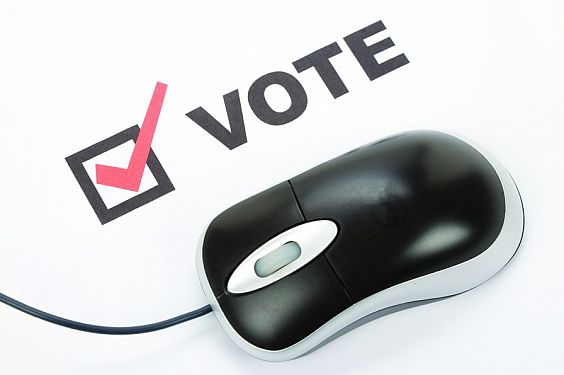

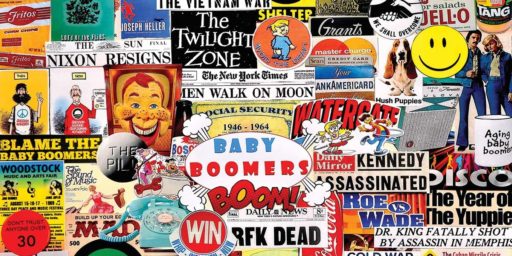
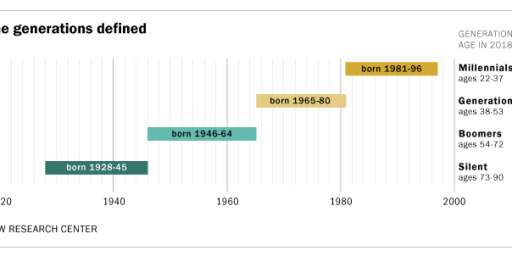
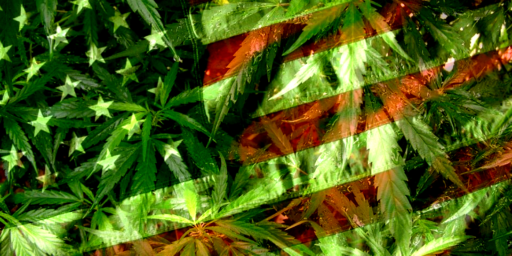
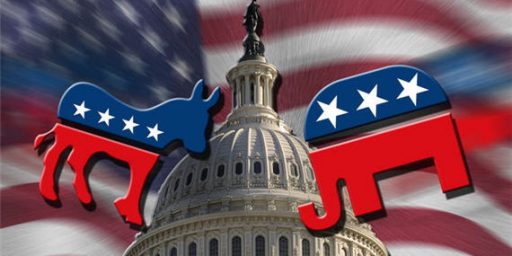

CNN Mucchi Cucchi gone!
Collective stupidity is the only thing which explains that.
Bluster is right…The Mooch is gone after, what, 10 days? But there is no chaos in the White House.
HOORAY – time for boomers to start leaving the stage and all the septuagenarians considering a run for president? Your time has past.
Yes, the Mooch is done. Figuratively brought out to the Secaucus Meadows in a car trunk and dumped.
The Mooch didn’t even last a fortnight…and really…how often do you get to use fortnight in a sentence?
Now if John Kelly can get rid of Ivanka and Jared and Donnie Jr. and Donnie Sr.s Blackberry then maybe this WH can actually accomplish something for the American people.
Muhahahahahaha
I crack myself up….
@Daryl’s other brother Darryl: Let’s not go crazy here, there’s no agenda at stake other than your basic, garden-variety kleptocracy.
F@cking finally!
The downside is that my Gen X brothers and sisters don’t seem to be much better so far. Hopefully the millennials will keep this country from augering in.
I was on the leading edge of the baby boomers. We invented rock’n’roll, recreational sex, and not givin’ a shit. We have been in charge since Bill Clinton, and our apotheosis is in charge now. We are not going gentle into that good night. You are snivel-nosed punks who can’t do anything except post on Facebook. We are not moving aside; you’ll have to shove us. Don’t forget, we have all the money, and I have my attorney on speed dial to change my will in a New York minute. We are Springsteen, Coppola, and all the living Ramones. Come at us…to quote something we like, ” You feeling lucky, punk?”
Graveyards around the world are full of people who thought the world couldn’t go on without them.
This isn’t really true. Independents are 33%, according to Huff Pollster, and at least half (probably more) of independents are secret partisans who vote for one party or the other as reliably as any partisan.
In Pennsylvania, Republican turnout was high and Democratic turnout was low. That’s how Trump won Pennsylvania. He got fewer votes in Pennsylvania than Obama did in either 2008 or 2012, it’s just that Clinton dramatically underperformed Obama. Clinton got about 20,000 fewer votes in each of the heavily Democratic areas of Philadelphia and Scranton, which is very nearly the winning margin in the state, while Trump got significantly more votes in Republican southwest PA.
That’s not to there are no swing voters, but to say that the “vast majority” don’t identify” with a party is an exaggeration.
I’m not a fan of over-reliance on our generational groupings.
For example, Baby Boomers are defined as being born between 1946 and ~1964. Someone born in 1946 had a wildly different formative period than someone born in 1964.
Elvis Presley vs. Elvis Costello
Also, it ignores geography. Both the region and the rural / urban / suburban aspect. And race. And class.
@de stijl:
I agree. My sister and I were born two years apart, but we’re members of different generations? I’ve long wondered how that makes sense to anyone. Not that it stops me from teasing her about being one of the over the hill Boomers.
@de stijl:
Generations are useful for comparing cohorts, not individuals or subgroups. There is plenty of evidence that these generational cohorts share attributes that are distinct from other generations. And this makes logical sense. A generation that few up during the Great Depression is going to have different attitudes than a generation that grew up during an economic boom.
@Slugger:
10/10 for a great troll.
@Andy:
The baby boom is too large of a cohort (as are most of the others.) It was initially the period of higher birth rates after WWII. It was redefined into a “generation” later.
The whole concept is entirely arbitrary and basically defined by the media. We call the Greatest Generation that because of Tom Brokaw. Gen X by Douglas Coupland.
As an analytical tool “generation” is nigh useless. Someone born in 1964 is in a different “generation” than someone born in 1965 which is bonkers.
It’s pretty easy to make the case that the Baby Boomers have been the Worst Generation.
http://www.businessinsider.com/how-baby-boomers-became-the-most-selfish-generation-2016-11
https://www.realclearpolitics.com/articles/2015/01/08/the_most_entitled_generation_isnt_millennials_its_baby_boomers_125184.html
http://www.nytimes.com/2012/07/30/opinion/keller-the-entitled-generation.html
http://www.esquire.com/news-politics/a1451/worst-generation-0400/
@Kari Q:
I honestly believe that the percentage of actual independents is less than 10%, however that is enough to swing a national election, even if you don’t win the popular vote.
Also, ironic that Boomers are going out by leaving America with a decadent narcissist in the White House.
@al-Alameda:
My personal guess is 5-7%, and yes that’s enough to decide an election if they all swing the same direction. It’s not a majority, but it’s not a negligible amount either.
@de stijl:
You’re engaging in a semantic slippery slope fallacy* here (e.g. since we can’t define a specific number of hairs where someone goes from being bald to having a full head of hair, there’s really no difference between the two).
The fact that the bounding of generational cohorts will necessarily be fuzzy for a variety of reasons doesn’t mean the concept has no utility.
* — Note that there’s a distinction between a causal slippery slip fallacy and a semantic slippery slope fallacy
@teve tory: You make it sound like we don’t actually KNOW this. Our generation was the one that invented helicopter parenting, schools turned into the dysfunctional messes that they’ve become on our watch, we invented shunting poor and minority students of into “compensatory and remediative” special programs that hold them in limbo by reinforcing the idea that they’re not able to learn anything, we speculated the real estate market into a entity which excludes almost everyone not in the top 5% of income from home ownership, we’re the ones who destroyed union membership with right to work laws. Damn, we did more to flock up the country than anyone may ever be able to do again.
And it’s gonna stay broken, too, because we taught the next generation everything they know about how to live–and it’s not pretty.
@Just ‘nutha ig’nint cracker: Did I forget to mention that we turned the NRA from a firearms safety/hunting group into what it is now?
@al-Alameda:
I think it’s a mistake to look at it in terms of independents vs. partisans. The proper term we should be using is simply “swing voters.” You wouldn’t believe how many pundits who should know better treat the terms “swing voter” and “independent” as if they are interchangeable, when nothing could be further from the truth. Not only are a majority of indepedents closet partisans, but swing voters aren’t even necessarily independents. There are self-identified Democrats who vote Republican, and vice versa. And there are degrees to these things: there are what might be called weak swing voters (people who usually, but not always, vote for the same party) versus those whose votes are truly up for grabs in any election.
One of the reasons pundits prefer to talk about independents, and to equate them with swing voters, is that it’s an easier group to identify. Another reason is that they’re romanticized in our political culture, partly due to the positive connotations of the word “independent,” and partly due to the perception of partisan identity as inherently a weakness, with its image of mindlessly cheering for one’s own “team.”
Swing voters, too, are romanticized way beyond their worth–there’s a tendency to think of them as open-minded thinkers stroking their chin weighing the pros and cons of the different candidates. In reality, studies indicate that swing voters tend to be the least engaged–and least informed–portion of the electorate.
This is one of the reasons why people are always overinterpreting election results. After Bush scored one of the narrowest reelection victories in history, Karl Rove started crowing about a “permanent Republican majority.” Four years later, after Obama won a comfortable but historically unremarkable electoral victory, James Carville wrote a book predicting Democrats would enjoy a 40-year reign.
The continual fallacy is to treat the entire electorate as a monolithic entity. That’s why we’re always hearing odes to what “the American public” believes, as if “the American public” constitutes a single creature. The truth is, the vast majority of voters vote the exact same way in every election, unmoved by who the candidates are or what’s happening in the world. Most people who voted Democrat in 2004 voted Democrat in 2008 and 2012 and 2016, and the same is true of Republicans. Only a tiny minority of people determined the different outcomes of those elections, either by voting for different parties (the swing voters) or by staying home some of the time. And for most such people, their decisions were based more on whimsy than careful thought. Of course, new voters are always entering the electorate and old ones leaving it, but the effects of this are only going to be felt very gradually, especially since older people just vote a lot more than the young. That’s why it’s so foolish to think of any election victory as representing some permanent condition.
@Just ‘nutha ig’nint cracker:
I was actually being kinda tongue-in-cheek. It’s kinda dumb to say “Baby Boomers are spoiled/’Greatest Generation’ was ________ / Millennials are (whatever)”
Human beings are human beings. If a cohort tends to act in a certain way, it’s because human nature responds to the environment that cohort was in, in that kinda way. Blaming or criticising individuals for big social tides is sorta simple-minded and dumb, even tho I do it as much as the next guy.
@de stijl:
And yet surveys of the various age groups corresponding to generations show distinct differences in a variety of attitudes and views. What is the explantion for that other than actual differences between the cohorts?
@Kylopod:
I agree with that part of your comment. I’m an actual independent – really an anti-partisan. Most independents and swing voters are just trying to find the least crappy candidate from the two parties.
@Andy:
I’m not saying age cohorts are useless, but that age groupings become less useful as they increase in length.
Our “generations” construct have too big a span.
@Andy:
Actually, research shows that most independents are partisan Democrats and Republicans in all but name.
It seems that whenever I bring this subject up, self-identifying independents get offended. But there’s nothing that should offend you. Note that I consistently used the word “most.” I wasn’t denying that there are genuine, open-minded independents out there. All I was doing was pointing out that the evidence indicates they’re far more the exception than the rule. Similarly, as the article I linked to in my previous comment demonstrates, “swing voters” are mostly low-information voters who aren’t deeply engaged in the political process. Once again, note the word mostly. That isn’t a synonym for “entirely.”
Ironically, the way you describe independents and swing voters as “trying to find the least crappy candidates from the two parties” is in fact a far better description of partisans. In today’s age, partisan identity is largely reinforced by what political scientists call negative partisanship–in other words, hating the other party. The 2016 election was an excellent example. Trump and Hillary were the most disliked candidates in history (at least as far back as there has been polling on candidate favorability), yet 94% of voters voted for them anyway, and a lot of that had to do with the fact that most Republicans and Democrats justified their support for one of the two based on how awful they claimed the other one was.
I’m not trying to engage in equivalence here; I think a lot of the Hillary-bashing was rationalization by people who couldn’t bring themselves to admit the genuine awfulness of Trump. But it’s striking that the partisan breakdown of votes was scarcely any different from 2012. In both elections, both candidates won approximately 90% of their party’s vote, with the Republican nominee beating the Democrat among independents by about 5 points. Differences at the margins were enough to produce a different electoral outcome, but looked at from a distance there was hardly any movement at all from the three groups.
It hasn’t always been like this. In 1992, independent Ross Perot won nearly 20% of the popular vote. In the next cycle he got less than half of that, but even then it was still larger than all of the third-party candidates in 2016 combined. Moreover, it wasn’t that far back in history when even the partisan vote was largely up for grabs. In 1964 the Democratic nominee won more than 60% of the popular vote and nearly all of the states; eight years later the Republican nominee did the same thing. Those kinds of lopsided victories are practically impossible today because partisan identity has hardened and there are a lot more hard-core partisans than there were back then. The increase in people calling themselves “independent” masks that reality.
@Kylopod:
This is largely a result of post-Civil Rights era ideological sorting of the two parties. Liberal Republicans once existed, as did conservative Democrats. Voters were often choosing between candidates with similar positions or had a Democrat running to the right of the Republican so they voted with the one that was closest to their own ideology. Without that ideological mixture within the parties, politics plays out very differently both locally and nationally.
My father lives in Oklahoma, where the state budget is a complete mess (The local highway patrol officer can only afford enough gas to drive for two hours a day, so the car sits idle at the local airport until it gets a call, for example). A candidate for state legislature came to his town to talk to voters, and the only thing he (the candidate) wanted and was ready to talk about was abortion. He had no ideas on how to handle the budget crisis and no interest in developing them. He still won, because he’s the Republican and it’s Oklahoma. Even 20 years ago, that wouldn’t have happened. People would have cared enough about funding law enforcement and schools to cross party lines and vote for the candidate with something to say about the budget. Not any more.
@Kari Q: I’ve repeatedly seen the suggestion by some of the more poli-sci-oriented commentators (for instance, this article) that part of the problem with our system today is that partisan polarization has made the two parties function more like parties typically do in a parliamentary democracy, yet that’s something that doesn’t work very well in a presidential system of government.
Personally, I think the problem with these sorts of theories (which aren’t necessarily wrong in the particulars) is that they neglect the true root of the disease, which is that the GOP today has completely gone off the rails, in a way that the Democratic Party simply has not. There’s one prominent political scientist who’s been saying this for years–Norman Ornstein (who not incidentally was one of the earliest mainstream pundits to recognize that Trump had a real chance of winning the GOP nomination). Most members of his profession avoid saying so out of fear of sounding like a biased partisan.
I’ve got plenty of my own ideas on institutional fixes I’d like to see. I’m no fan of the filibuster, even though it is currently helping the Democrats. I’d like to see an end to the Electoral College, and the introduction of proportional representation in Congressional elections. But I realize that, with the possible exception of ending the filibuster, most of those changes are pipedreams–because one of the very symptoms of the dysfunction today is a profound inability to achieve the kind of broad consensus that would be needed to bring about most of those changes. Right now, everything’s a zero-sum game between the two parties, and they’re both fighting for their lives. Even if Dems were to regain unified control of government by 2020, it wouldn’t be that long before the GOP snatched it back from them. If the disaster of the Bush years couldn’t keep them out of power for more than a few years, I don’t what will. The only hint of optimism I can offer is that I know this situation won’t last indefinitely. The effect of generational and demographic change will eventually kick in, even though it’s been slower than a lot of people predicted. But at the present, the basic situation truly is intractable as far as I can tell.